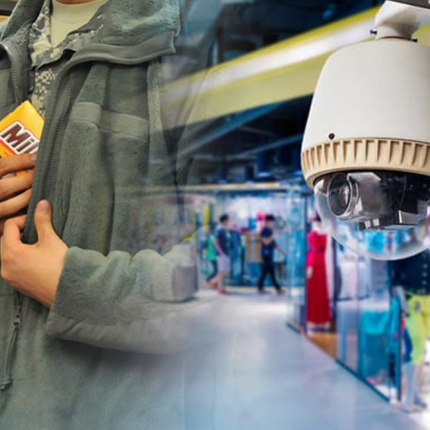Description
Overview of Waste Management Using BLE or RFID
Waste management using BLE (Bluetooth Low Energy) or RFID (Radio-Frequency Identification) technologies significantly enhances efficiency, accuracy, and sustainability in waste collection and disposal. BLE sensors can be installed in smart bins to monitor fill levels, sending data to a centralized system for real-time monitoring. This data helps optimize collection routes, reducing fuel consumption and operational costs. BLE-enabled bins can also send alerts when full or in need of maintenance. Additionally, BLE tags can be attached to waste collection vehicles and containers for real-time tracking, ensuring proper management and maintenance. The data collected from BLE sensors can be analyzed to understand waste generation patterns, predict future needs, and improve overall waste management strategies.
RFID technology offers similar benefits. RFID tags on waste bins and containers allow for quick and accurate identification and tracking. Collection vehicles equipped with RFID readers can automatically log which bins have been emptied, ensuring no bin is missed. This data can be used to optimize collection schedules and routes, further enhancing efficiency. Both BLE and RFID technologies provide valuable data for analytics, enabling waste management companies to make informed decisions, allocate resources more effectively, and implement more sustainable practices.
Applications in Waste Management Using BLE or RFID
- Fill Level Monitoring
- Overflow Alerts
- Optimized Collection Routes
- Dynamic Routing
- Vehicle Tracking
- Container Tracking
- Automated Waste Collection Logging
- Inventory Management
- Proactive Maintenance Alerts
- Service Efficiency
- Smart Recycling Bins
- Recycling Compliance Monitoring
- Waste Generation Analysis
- Regulatory Compliance Reporting
- Citizen Engagement via Mobile Apps
- Real-Time Bin Status Monitoring
- Fleet Management
- Theft Prevention of Bins
- Usage Pattern Analysis
- Energy Consumption Tracking
- Environmental Impact Monitoring
- Cost Reduction Analysis
- Predictive Maintenance
- Bin Relocation Tracking
- Route Optimization Software Integration
- Real-Time Data Analytics
- Smart City Integration
- Resource Allocation Planning
- Emergency Response Coordination
- Performance Metrics Tracking
- Sustainability Reporting
- Demand Forecasting
- Compliance with Waste Disposal Regulations
- Reduced Labor Costs
- Enhanced Customer Service
- Waste Bin Identification
- Geo-Fencing for Bins
- Historical Data Analysis
- Public Health Monitoring
- Bin Usage Trend Analysis
Technical Specifications of Waste Management Using BLE or RFID
BLE Beacons or RFID tags in Waste Management Systems
BLE beacons in waste management systems typically have a range of 10-100 meters, depending on the environment and the specific beacon model. They offer battery life ranging from 1 to 5 years, influenced by transmission interval and power settings. These beacons have adjustable transmission power levels, typically from -30 dBm to +4 dBm, impacting both range and battery life. The standard BLE data rate is 1 Mbps, with newer versions like BLE 5.0 supporting up to 2 Mbps, all operating in the 2.4 GHz ISM band. BLE beacons are compatible with smartphones, tablets, and other BLE-enabled devices. They are often designed to be environmentally resistant, with IP ratings such as IP67 for dust and water resistance. Some beacons include additional sensors for temperature, humidity, and motion. They are also cost-effective, with prices ranging from a few dollars to around $20 per beacon, depending on the features.
RFID tags used in waste management systems can be passive, active, or semi-passive. Passive RFID tags have a read range of up to a few meters, while active RFID tags can be read from distances up to 100 meters or more. They typically operate in various frequency ranges, such as LF (125-134 kHz), HF (13.56 MHz), and UHF (860-960 MHz). Passive tags have a virtually unlimited lifespan as they do not contain a battery, while active and semi-passive tags have battery lives ranging from 3 to 7 years. RFID tags can store data from a few bytes to several kilobytes, depending on the type and application requirements. They are made to withstand harsh environments, often with rugged, weather-resistant designs. The cost of RFID tags varies, with passive tags costing as little as a few cents each, and active tags ranging from $10 to $50 or more. RFID systems typically include readers, antennas, and software for data collection and analysis.
BLE Gateways or RFID Readers in Waste Management Systems
BLE gateways in waste management systems typically have a range of up to 100 meters indoors and up to 400 meters outdoors. They support multiple communication protocols, including Wi-Fi, Ethernet, and cellular (3G/4G/5G) for data backhaul, and are capable of collecting and processing data from multiple BLE beacons simultaneously. These gateways are usually powered by AC power, with some models offering battery backup or solar panel options. They are often built with industrial-grade components and enclosures, featuring IP ratings like IP65 or higher for dust and water resistance.
RFID readers in waste management systems can read tags from a few centimeters up to 100 meters, depending on whether they are designed for LF, HF, or UHF RFID tags. They support various connectivity options such as Ethernet, Wi-Fi, and cellular networks for transmitting data. RFID readers can handle multiple tag reads per second, making them suitable for fast and efficient waste collection processes. These readers are typically powered by AC power, though portable models with battery power are also available. RFID readers are designed to withstand harsh environmental conditions, often featuring rugged and weather-resistant enclosures with IP ratings like IP67. They include software for data collection, processing, and integration with waste management systems.
Cloud Systems
GAO Cloud BLE or RFID Systems consists of the following parts:
GAO BLE Gateways and Beacons and RFID Readers and Tags
BLE or RFID Cloud, Server, PC & Mobile
GAO Cloud Services Engine for BLE or RFID
Cloud Infrastructure, BLE & RFID Middleware, Data Analytics and Business Intelligence, and Security Measures.
Integration APIs
APIs enable seamless integration between the BLE or RFID solution and existing waste management systems such as POS, inventory management, and e-commerce platforms, allowing for data exchange and synchronization.
Server, PC & Mobile Systems
GAO Server, PC & Mobile BLE or RFID Systems are composed of
BLE Gateways and Beacons, RFID Tags and Readers
GAO Server, PC and Mobile Software Engine for BLE & RFID
Server, PC, and Mobile Servers and Infrastructure, Middleware Software, and Database Management System.
Integration with Waste Management Systems
The Server, PC, and Mobile solution integrates with existing waste management systems such as inventory management, point-of-sale (POS), and enterprise resource planning (ERP) systems. Integration is achieved through APIs, database connections, or middleware adapters, enabling seamless data exchange and synchronization.
All GAO’s RFID products are jointly offered by GAO Tek Inc. and its sister company GAO RFID Inc., ranked as a top 10 global RFID and IoT supplier. For RFID products on https://gaotek.com/, please visit RFID-BLE category, and its sub-categories: BLE Gateways, Beacons & Accs, UHF Readers, Tags & Accs, NFC & HF Readers, Tags & Accs, LF Readers, Tags & Accs, and BLE or RFID Cloud, Server, PC & Mobile.
You also are encouraged to visit gaorfid.com that offers a more comprehensive, more complete and different set of RFID products: BLE, RFID Readers, RFID Tags, Antennas & Accessories, RFID Systems, System By Feature.



